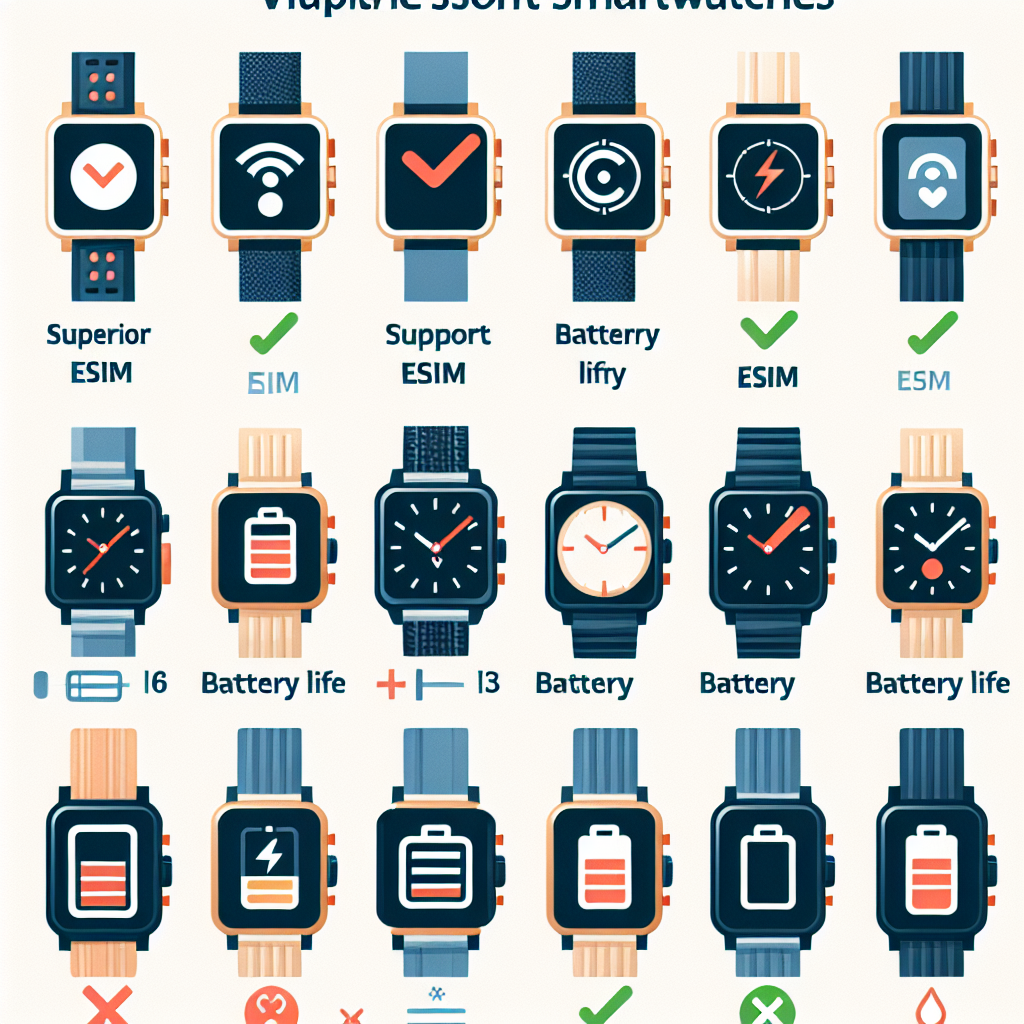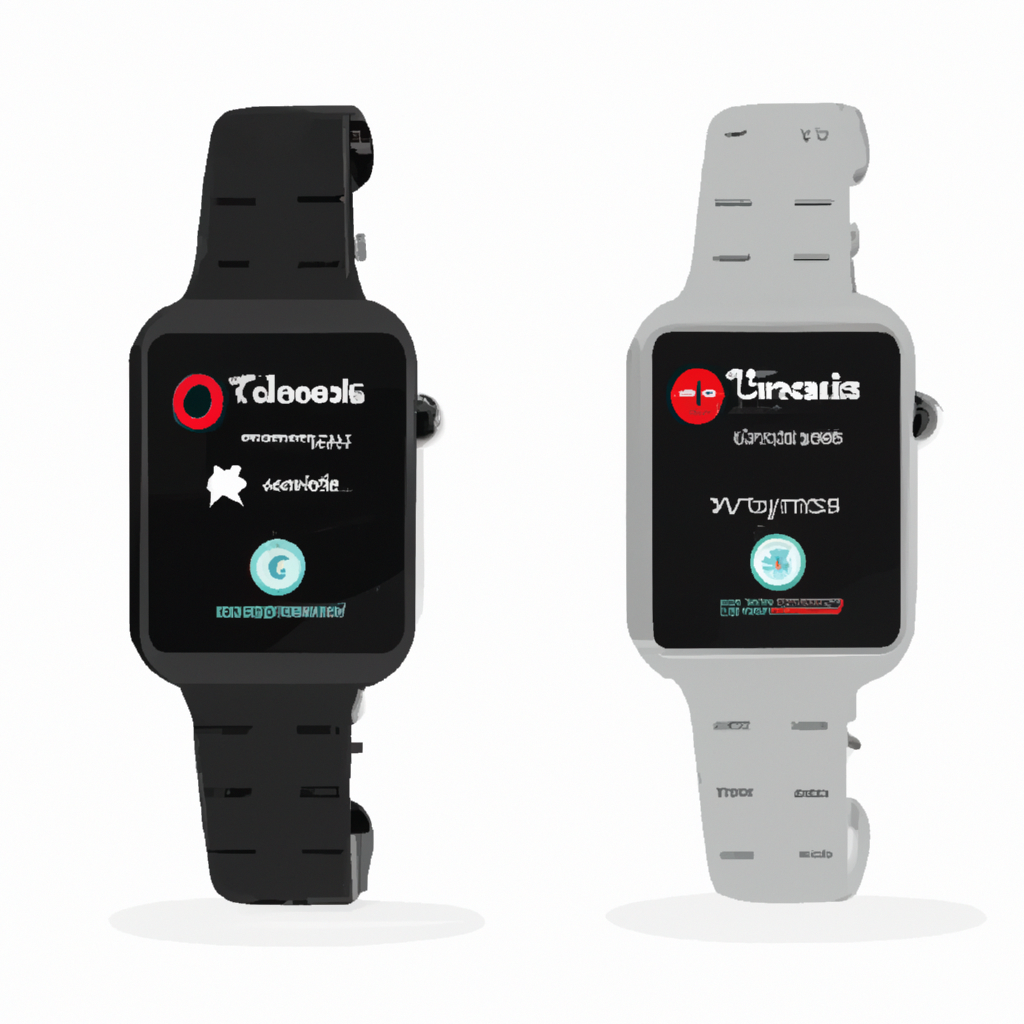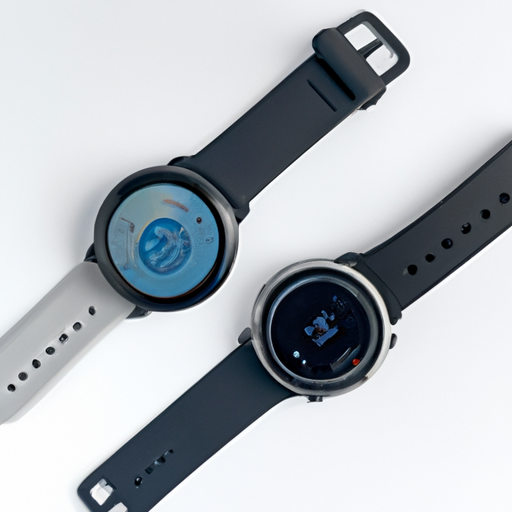Introduction to eSIM-Enabled Smartwatches
The smartwatch market is rapidly evolving, and one of the most sought-after features is eSIM support. With eSIM technology, users can enjoy cellular connectivity without needing a physical SIM card, allowing for greater flexibility and independence from smartphones. However, as users embrace these convenient features, battery life remains a critical consideration. In this guide, we’ll explore which smartwatches support eSIM, compare their battery life, and discuss key factors such as LTE smartwatch readiness, wearable battery optimization, standby time, and user experience.
What is eSIM and Why is it Important in Smartwatches?
eSIM, or embedded SIM, is a digital SIM card embedded in your device. It allows smartwatches to connect to cellular networks independently, enabling phone calls, messages, app notifications, and streaming directly from your wrist. For those who want to leave their phones behind during workouts or commutes, eSIM smartwatches are a game changer.
- eSIM compatibility provides freedom from a paired smartphone.
- LTE/4G connectivity enables streaming, GPS navigation, and emergency calls.
- Supports remote SIM provisioning, making carrier switching easy.
Top Smartwatches That Support eSIM
Let’s look at some of the most popular smartwatches with eSIM functionality and how their battery life compares. Whether you’re an athlete, a busy professional, or a tech enthusiast, there’s an eSIM smartwatch to fit your needs.
1. Apple Watch Series (Series 6, 7, 8, 9, Ultra)
The Apple Watch Series has been a pioneer in eSIM integration. All recent models (Series 6 and later, including Apple Watch Ultra) offer LTE connectivity via eSIM. Depending on usage, battery life ranges from 18 to 36 hours on a single charge. The Apple Watch Ultra offers up to 36 hours of typical use, or up to 60 hours in low power mode.
- Pro: Seamless integration with iOS devices
- Con: Battery life decreases with active LTE use
- LSI Keywords: Apple Watch eSIM battery drain, Apple Watch LTE standby time
2. Samsung Galaxy Watch Series (Galaxy Watch 4, 5, 6, and Classic)
Samsung’s Galaxy Watch lineup is highly regarded for its eSIM support and impressive battery management. The latest models offer up to 40-56 hours of battery life, though LTE usage can reduce this to around 24-36 hours depending on settings and applications.
- Pro: Longer standby time in power-saving modes
- Con: Heavily dependent on display brightness and app usage
- LSI Keywords: Samsung eSIM smartwatch battery life, Samsung Galaxy Watch LTE features
3. Huawei Watch 3 and Watch 3 Pro
The Huawei Watch 3 series boasts excellent battery longevity, partly due to its HarmonyOS optimization. The standard Watch 3 provides up to 3 days of battery with typical use (LTE enabled), while the Watch 3 Pro can last up to 5 days under similar conditions. In ultra-long battery life mode, the Pro model can stretch up to 21 days, though with limited smart features.
- Pro: Outstanding battery performance with eSIM enabled
- Con: Limited app ecosystem outside China
- LSI Keywords: Huawei eSIM smartwatch battery, HarmonyOS wearable battery
4. TicWatch Pro 3 Cellular/LTE
The TicWatch Pro 3 features a unique dual-display system—an AMOLED and a low-power FSTN screen. This allows users to extend battery life up to 3 days in smart mode and up to 45 days in essential mode (minimal features). With eSIM enabled, expect roughly 2-3 days of moderate use.
- Pro: Innovative power-saving display technology
- Con: Wear OS can impact battery life with heavy app usage
- LSI Keywords: TicWatch eSIM standby time, Wear OS battery optimization
5. Other Noteworthy Models
Other eSIM-ready smartwatches worth mentioning include the Oppo Watch, Garmin Forerunner 945 LTE, and Xiaomi Watch S1 Pro. These offer a range of battery lives from 24 hours to several days, depending on how robust their LTE usage and settings are.
Factors Affecting eSIM Smartwatch Battery Life
The battery life of eSIM smartwatches depends on several variables:
- Cellular Usage: More calls, messages, GPS tracking, and streaming drain the battery faster.
- Display Settings: Always-on displays and high brightness consume more power.
- App Usage: Frequent use of fitness tracking, music streaming, or messaging apps impacts longevity.
- Power Saving Modes: Many smartwatches offer modes that limit features to extend standby time.
- Operating System Efficiency: HarmonyOS, WatchOS, Wear OS, and Tizen all manage power differently.
How to Maximize Your Smartwatch’s eSIM Battery Life
Here are some tips for optimizing your wearable battery life when using eSIM features:
- Use low power mode during periods of inactivity.
- Disable LTE connectivity when not needed.
- Reduce screen brightness and limit always-on display features.
- Close unused apps running in the background.
- Keep software updated for the latest battery optimizations.
Comparative Table: eSIM Smartwatches and Battery Life
| Model | eSIM Support | Typical Battery Life | Extended Mode | Operating System |
|---|---|---|---|---|
| Apple Watch Series 9/Ultra | Yes | 18-36 hours | Up to 60 hours (Ultra, low power) | WatchOS |
| Samsung Galaxy Watch 6 | Yes | 40-56 hours | Up to 80 hours (power saving) | Wear OS |
| Huawei Watch 3 Pro | Yes | 5 days | Up to 21 days (ultra-long mode) | HarmonyOS |
| TicWatch Pro 3 LTE | Yes | 2-3 days | Up to 45 days (essential mode) | Wear OS |
| Oppo Watch | Yes | 24-36 hours | Up to 21 days (power saver) | Wear OS |
Best eSIM Smartwatch for Battery Life: Our Verdict
If battery longevity is your top priority, the Huawei Watch 3 Pro and TicWatch Pro 3 LTE lead the pack, thanks to their energy-efficient designs and smart power-saving modes. However, if you need seamless app integration and frequent LTE use, the Apple Watch Ultra and Samsung Galaxy Watch 6 offer a great balance between features and battery endurance.
When choosing an eSIM smartwatch, consider your daily usage patterns, preferred operating system, and whether you’ll often rely on cellular features. Always check for the latest models, as manufacturers continue to improve both eSIM support and battery technology.
FAQ: eSIM Smartwatches and Battery Life
- Does eSIM use more battery than a Bluetooth connection?
Yes, using LTE or 4G via eSIM drains the battery faster than relying solely on Bluetooth connectivity. - Can I extend battery life with software updates?
Absolutely. Firmware updates often include battery optimizations for eSIM and cellular services. - Is standby time different from active usage time?
Yes, standby time (idle with minimal features) is always longer than active usage with LTE, GPS, and apps running. - Are all eSIM smartwatches waterproof?
Most modern eSIM-ready smartwatches offer water resistance, but check specific model ratings for details.
Conclusion: Finding the Right eSIM Smartwatch for You
Choosing a smartwatch with eSIM support means considering both connectivity and battery performance. With top options from Apple, Samsung, Huawei, and more, you can select a model that matches your lifestyle—whether you need all-day power, advanced tracking, or the freedom of independent cellular access. Always balance your priorities, and remember that real-world battery life will depend on your daily habits and settings.



